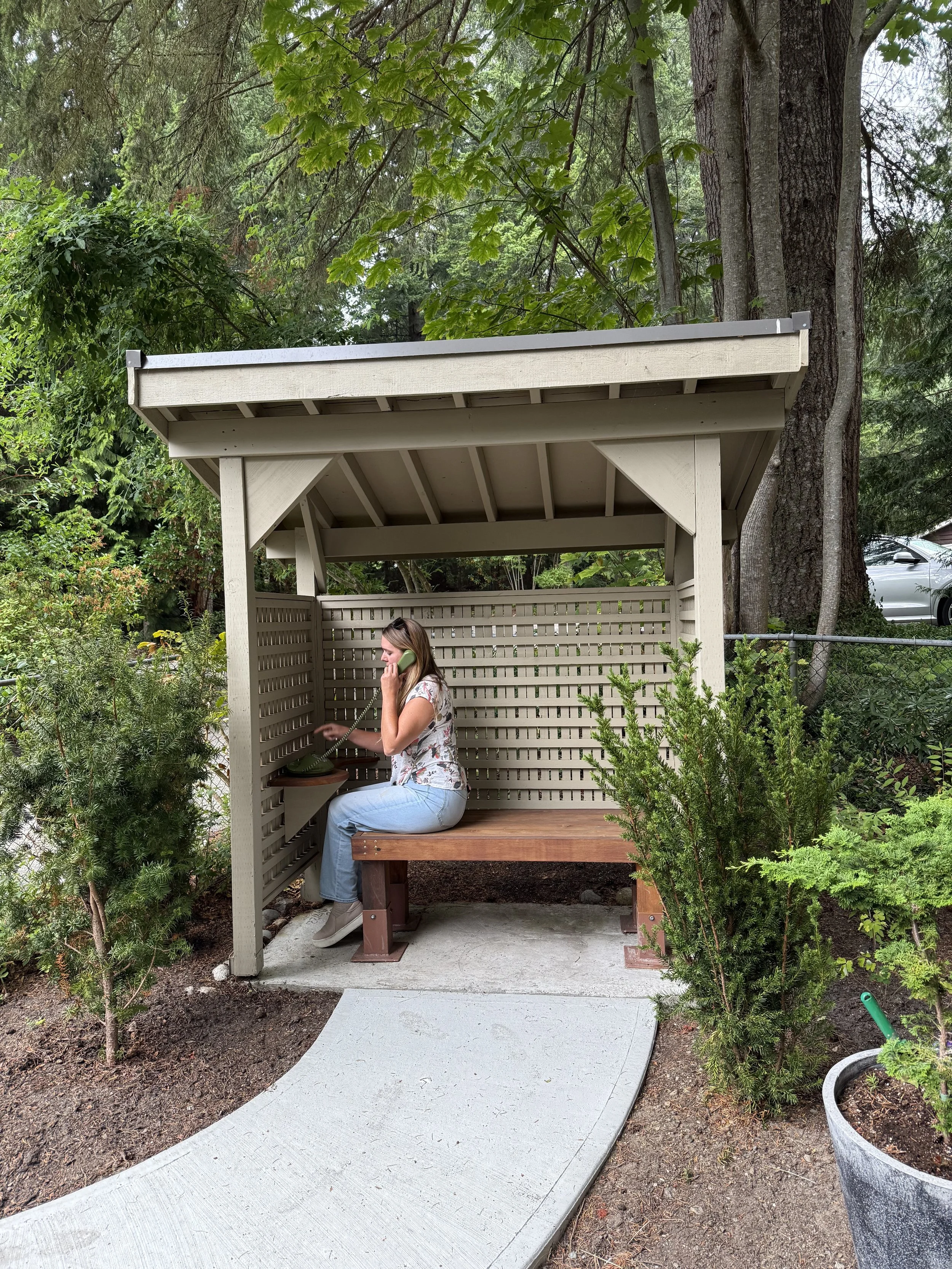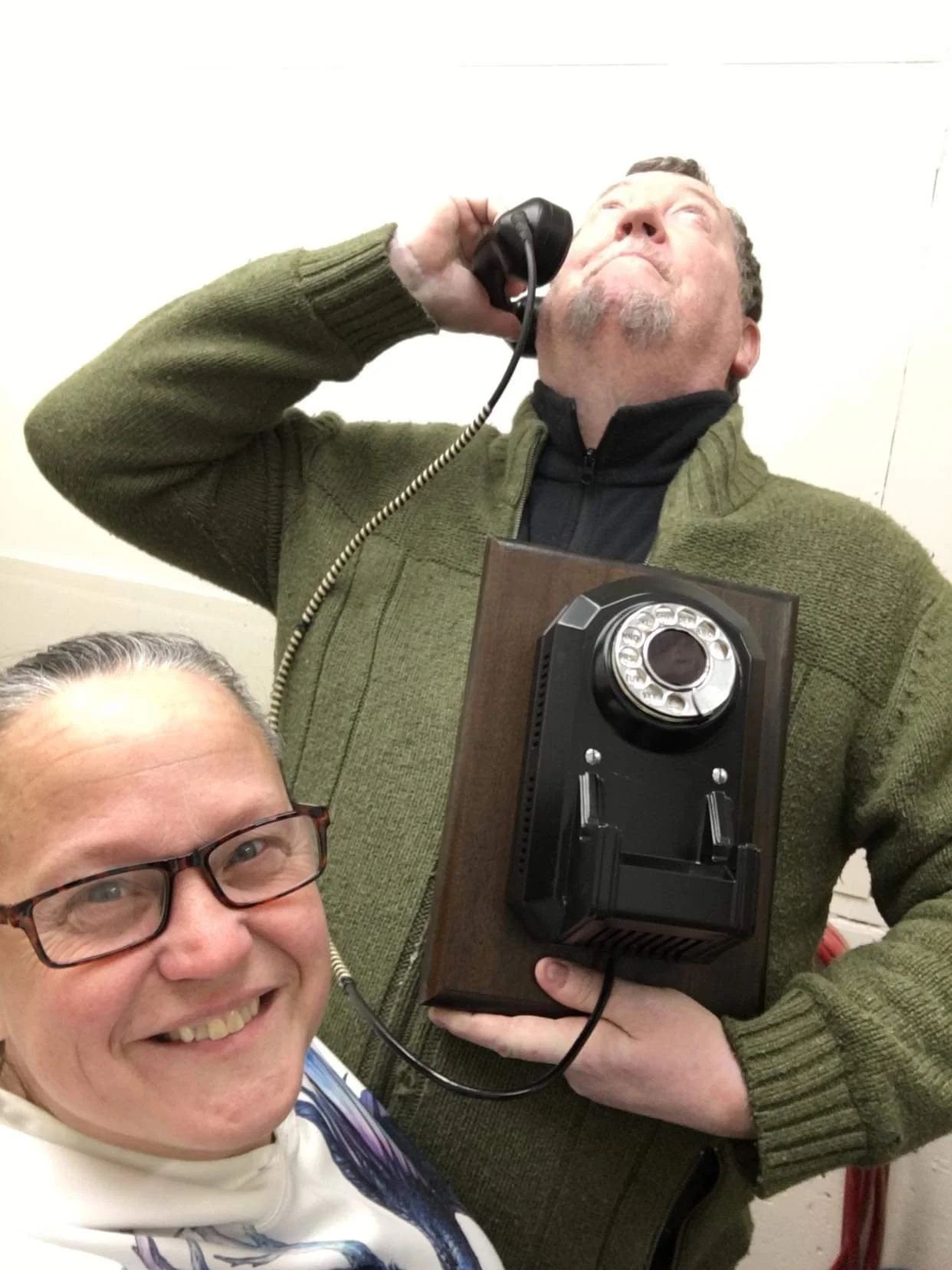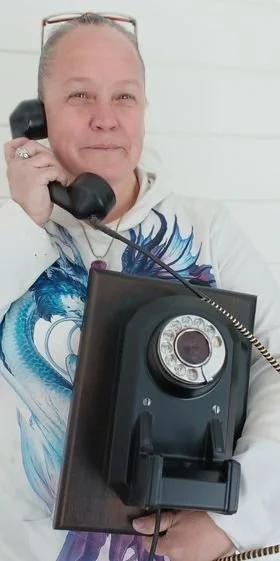History of The Wind Phone
Origin of the Wind Phone
The concept of the Wind Phone started in Japan with a man named Itaru Saski. In 2010, Saski was living in the quiet town of Otsuchi while grieving the loss of his beloved cousin. As an attempt to process his grief, he purchased an old-fashioned phone booth and placed it in his garden. Inside, he installed a disconnected rotary phone—one that wasn’t wired to anything. He called it 風の電話 (Kaze no Denwa), which translates to The Wind Phone.
To Sasaki, the phone was a way to speak to his cousin, to say the things he never had the chance to. Though no one was on the other end of the line, he found peace and healing in expressing his grief aloud.
In March 2011, the Great East Japan Earthquake (9.1 magnitude) and tsunami (with over 30-foot waves) devastated the region. Nearly 20,000 lives were lost, including many in Otsuchi. In the months that followed, word of Sasaki’s Wind Phone spread. Grieving families from all across Japan came to his garden to speak to their deceased loved ones. After such a tragedy, this Wind Phone became a saving grace for the people of Japan. What began as a personal outlet for one's grief slowly became a national and now an international symbol of healing.
Photo Credits to Kiyomi Noguchi
What is A Wind Phone?
The Wind Phone is a symbolic place of remembrance. Though the phone is not connected to any communication system, it offers something significant: a space to express emotions, unspoken words, and to feel connected to those who are missed.
It’s not about hearing a voice on the other end. It’s about giving yourself the freedom to find your own voice and your own feelings.
How Does It Work?
There’s no dial tone, no signal, and no wires. And yet, the Wind Phone “works” in a profound way. It gives people the chance to say what they've always wanted to say—words left unsaid, apologies never spoken, love inadequately or not fully expressed. In moments of silence or spoken memories, the Wind Phone offers a sense of release and emotional clarity free from judgment or time constraints.
Why Does It Matter?
Grief can become an isolating experience in a culture that sometimes has rigid ideas of how to heal. A Wind Phone offers a sacred pause to be present. It provides a moment to reconnect with those we’ve lost, not through technology but through intention, imagination and presence. It helps many people feel connected to their loved ones and encourages healing in its purest form: love.
Where Can I Find One?
With the support of donors and volunteers, we are honoured to set up the first Wind Phone on the Lower Sunshine Coast. It is available to all, 24 hours a day, seven days a week, outside of Hospice House in Davis Bay (4602 Simpkins Road).
Upon arrival, park and proceed towards the building. On the left-hand side, at the bottom of the access ramp, you’ll see a small shelter over a bench, surrounded by nature in a peaceful space designed for reflection, remembrance and healing. Within this structure is a green rotary phone, our Wind Phone.
What Do I Need To Bring?
Our Wind Phone is accessible to everyone and is available for free use. Our hope for this addition is to create another space for members of our Sunshine Coast community to feel connected to their grief and to feel supported, regardless of their situation. Dedicating a space in our gardens for a Wind Phone is one more way to provide support, as not everyone grieves the same way, and different things can bring us comfort and connection.
Please come as you are. Bring some water and/or a journal to take the time to reflect while using the phone. If you visit during office hours, please feel free to come inside for a tea, coffee, or support. We are here for you.
Wind Phone donation by Manuen & David Petersen; March 2022
The journey of bringing a Wind Phone to Coast Hospice began in 2022, when then-residents of the Sunshine Coast, Manuen and David Peterson, lovingly restored an antique telephone from the 1930s and donated it to Coast Hospice. Their vision was to create the Coast’s first Wind Phone, a place where people could speak to their deceased loved ones. “Now, children can call grandma and grandpa,” says Manuen. This special gift was made in honour and memory of Marilyn, “the best grandma ever!…”
The Wind Phone stands as a symbol of connection: a way to share words, love and remembrance with those who will not be forgotten. The original 1930s phone, pictured below, is made of bakelite and is too delicate to withstand outdoor elements. For now, we are keeping it inside Hospice House in Davis Bay.
Photo Credits to Manuen & David Petersen.
Sources for information and additional reading:
www.mywindphone.com/the-original-phone-of-the-wind






